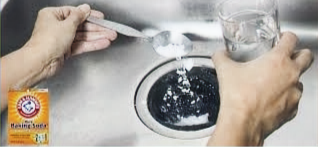Baking Soda and Vinegar
- Tracy Scheckel
- Jul 16
- 4 min read

We all know what happens when we mix baking soda and vinegar, right? Remember those volcano models when we were kids? Some of us also clean with baking soda and vinegar -- either sequentially or combined for certain projects like drain clogs and mold removal.
We all know the traditional uses for vinegar and baking soda in cooking and baking, but I recently learned that each has a significant impact on the simple act of boiling water for cooking things.
Vinegar and Baking Soda Chemistry Lesson

Vinegar is a weak carboxylic acid produced through the fermentation of ethanol by acetic acid bacteria. The acetic acid provides the characteristic sour taste and odor due to the presence of the carboxyl group, which allows it to act as a proton donor.
Baking soda or sodium bicarbonate is naturally found as the mineral nahcolite but can also be produced through chemical processes. Sodium bicarbonate is a white, crystalline solid that appears as a fine powder, has no odor, and dissolves in water. It is a mild base with a pH of around 8.3 can increase the alkalinity of boiling water.
OK, enough of that........
Boiling with Vinegar

From pasta to potatoes to poaching eggs, vinegar has a place when boiling water. Adding a splash slightly increases acidity and thus reduces the release of excess starch, it also speeds up how quickly egg whites set when poaching.
For all of the things I can cook without even thinking about it, I have always failed miserably at boiling potatoes for potato salad; no mater what I did, they would either be under cooked or bordering on mashed. Determined to get the perfect doneness I went to the internet and literally whined to the AI search engine about never getting my potatoes cooked to the right consistency.
Of course I got all the tips about cutting them to a uniformed size blah blah blah..... What I did learn that was of value is to put the cut potatoes into seasoned cold water and cover them by an inch or so. As for the 'seasoned' cold water; it's one tablespoon each of salt and vinegar per quart of water.
After the potatoes come to a rapid boil, you reduce the heat to a simmer and cook for 10 to 15 minutes until they fall off a fork or skewer when you stick them. Depending on the size of your potato chunks, start testing for tenderness at bout 10 minutes. The magic here is that the inside of each piece is soft and tender, but the outside stays firm -- in a good way. This apparently also works when par boiling potatoes for french frying. That may be a winter adventure.
Similarly, vinegar in pasta boiling is supposed to keep the pasta from sticking -- something else I've yet to try, but will report back when I do.
Baking Soda in Boiling Water

I was chatting with my friend Eric about the process of baking beans and he mentioned adding some baking soda to the water to speed up the softening process during boiling. At that moment, this light-bulb in my head started blinking. I had boiled beans a few weeks prior to that conversation and thought I was losing my mind because they were taking forever to get to the right tenderness for seasoning and baking. Fact is, apparently my water is on the hard side and high in mineral content. Adding a bit of baking soda reduced the effects of the harder water and my next batch of baked beans softened up in a much more reasonable amount of time.
Using baking soda in the boil for bagels and pretzels increases the alkalinity promotes a chemical reaction that ultimately enhances flavor and helps to attain that deep golden brown color during baking.
Cleaning with Baking Soda and Vinegar

Bet you were you wondering if I was going to leave you hanging about cleaning with baking soda and vinegar. Nope, here are a couple of tips.
Mild Drain Clogs:
A one - two combination of baking soda and vinegar can help unclog drains. First you pour baking soda down the drain, then some vinegar, and let it fizz for a few minutes before flushing with hot water.
Mold Removal:
A thick paste of baking soda and vinegar can be applied to mold, left to dry, and then scrubbed off.
Which Vinegar to Use for What Purpose

When I'm using vinegar for cleaning, I always use white vinegar, it's the lease expensive, and it does the job just fine. When cooking potatoes for salad, I use apple cider or white balsamic vinegar since those are what I typically use in the dressing for the salad. When I experiment with pasta and potatoes for french frying, I'll likely use white vinegar, although where the fries are concerned, some malt vinegar may be in order. We'll see and I will report back.





